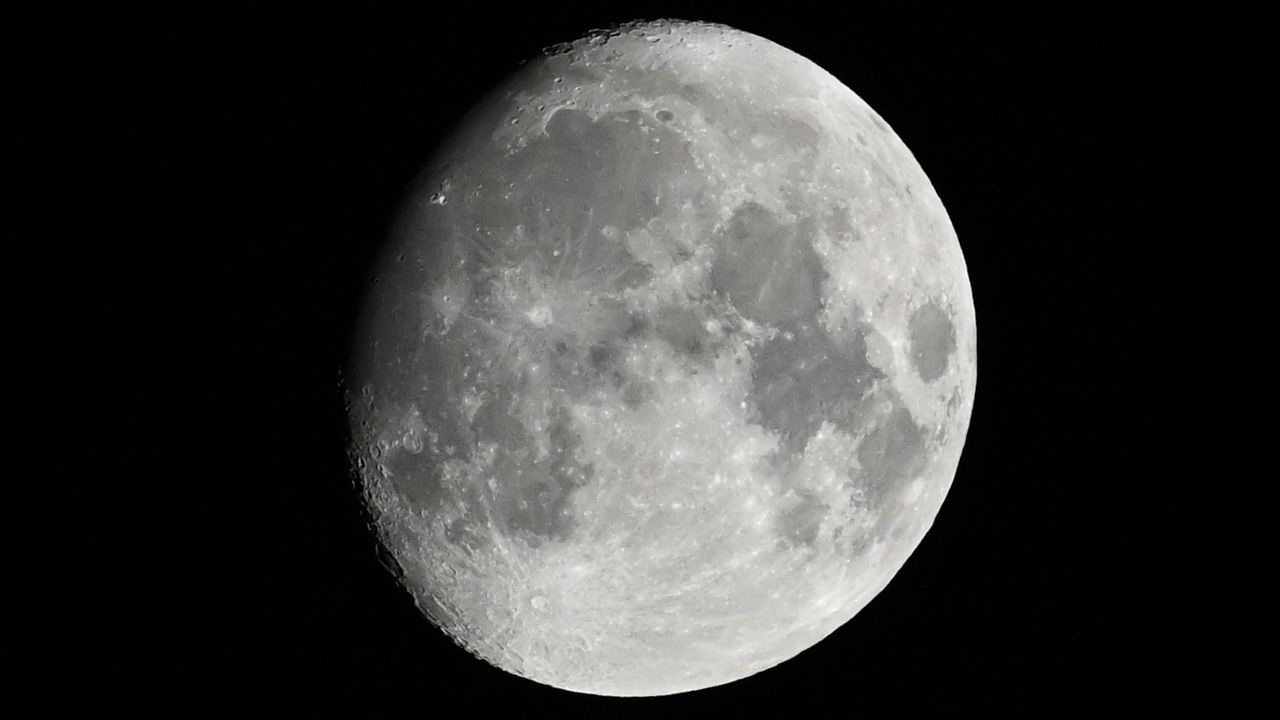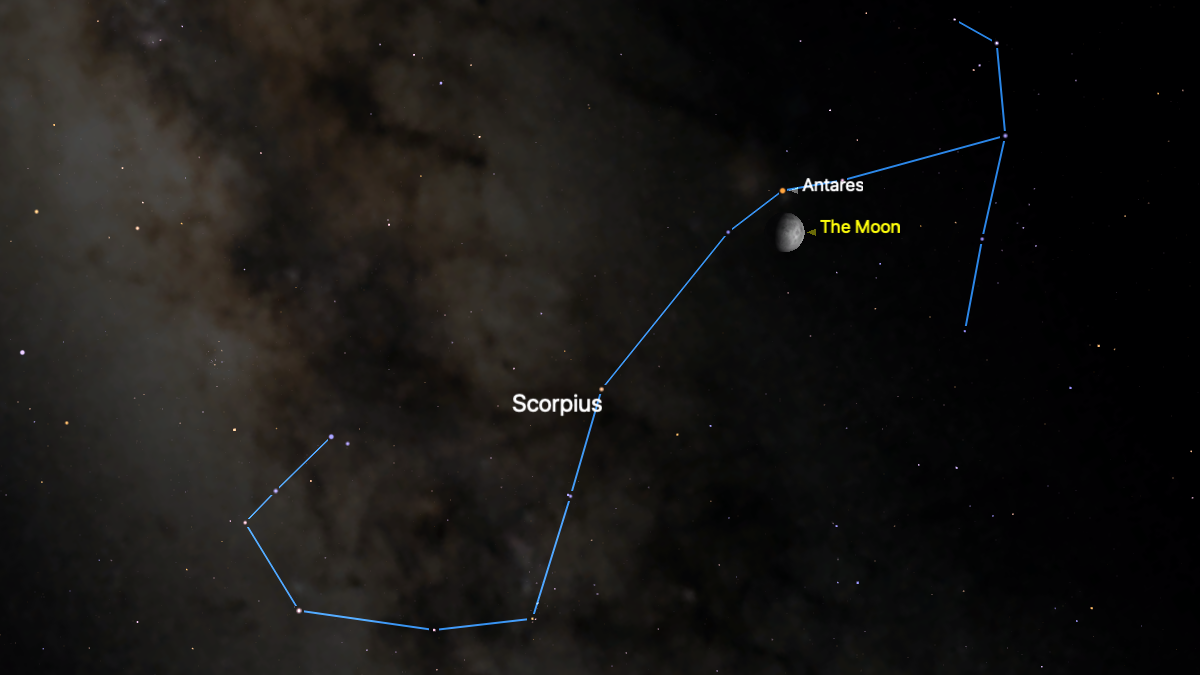
Heads up, stargazers! The waxing gibbous moon will shine close to the red star Antares after sunset on Sunday (Aug. 3).
Look 20 degrees above the southern horizon to find the 69%-lit moon glowing among the stars of the constellation Scorpius, with Antares appearing as a bright, reddish point of light roughly 1 degree to the upper left of the lunar disk. Remember: The tip of your finger held at arm's length accounts for approximately 1 degree of the night sky.
As the night wears on, Antares will appear to skirt around the moon's northern rim. It will finally set to the right of Earth's satellite as it slips below the southwestern horizon in the early hours of Aug. 4.
The moon will pass directly in front of, or occult, Antares from the perspective of several places in the Southern Hemisphere — including Argentina, Chile, the Falkland Islands and Antarctica — after 8:08 p.m. ET on Aug. 3 (0008 GMT Aug. 4).

Antares is a red supergiant star 700 times the size of the sun. The star, which orbits within the Milky Way some 600 light-years from Earth, has long since used up its hydrogen fuel and has transitioned to fusing heavier elements in a bid to stave off its gravitational collapse. Once these reserves are depleted, the star will end its life in a dramatic supernova explosion that will be easily visible from Earth, according to EarthSky.org.
Stargazers who are interested in exploring the lunar seas and craters of the moon should check out our roundups of the top telescopes and binoculars available in 2025. Photographers who want to capture the majesty of Earth's natural satellite should also read our ultimate guide to imaging the moon using a DSLR camera, along with our picks for the best lenses and cameras for astrophotography.
Editor's note: If you take a picture of Antares with the moon and want to share it with Space.com's readers, please send your photo, along with your comments, name and location, to spacephotos@space.com.







